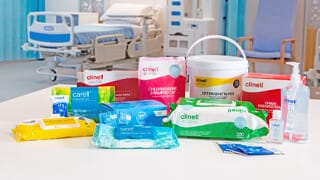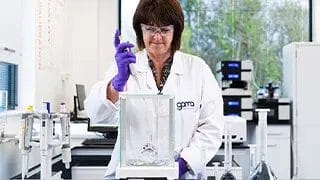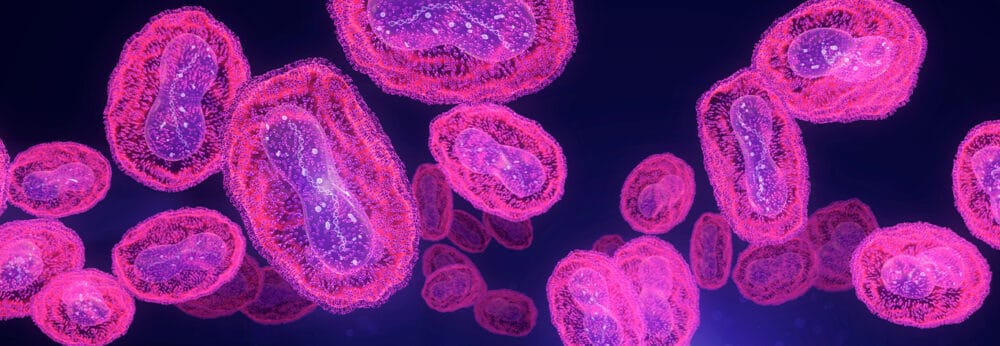Posted
29th November 2019
Research
A new Israeli study in a hospital with endemic issues due to carbapenem-resistant Acinetobacter baumannii reports high levels of environmental contamination that persisted despite several different approaches to cleaning and disinfection. This study highlights the risk of patient-to-patient spread of carbapenem-resistant A. baumannii associated with environmental contamination. The study was performed in a large hospital in Tel Aviv, Israel. The hospital had endemic issues with carbapenem-resistant A. baumannii, mainly affecting ventilated patients either in critical care units or so-called “step-up” rooms in medical wards (which we think are a rough equivalent of high dependency units). High levels of environmental contamination were identified in the hospital, including:
- 30/71 (42%) of electronic monitoring devices. This included a high proportion of carbapenem-resistant A. baumannii contamination (35%) on monitors that were being used to care for patients not known to be infected or colonised with CRAB.
- 148/265 (56%) of surfaces in 91% of step-up rooms.
- 96/399 (24%) of surfaces in 76% of single rooms in the ICU.
- The most frequently contaminated objects were: stethoscopes (50%), cupboard shelves (38%), and bedrails (36%).
An intensive cleaning intervention was launched: 62/80 (78%) of objects were contaminated before refresher training, and 26/62 (42%) of objects were contaminated after refresher training. There was a poor correlation between surface hygiene as judged by a fluorescent marker system and environmental contamination with carbapenem-resistant A. baumannii.
Due to the limited impact of manual methods, the study group tested how low concentration (5%) aerosolised hydrogen peroxide automated room disinfection compared with sodium hypochlorite manual disinfection. 24/59 (41%) of objects in three rooms were contaminated with carbapenem-resistant A. baumannii before sodium hypochlorite manual disinfection and 3/52 (6%) after. 59/74 (80%) of objects in four rooms were contaminated with carbapenem-resistant A. baumannii before aerosolised hydrogen peroxide automated room disinfection and 12/68 (18%) afterwards. This suggests that using low-concentration aerosolised hydrogen peroxide did not have any benefits over manual disinfection using sodium hypochlorite.
This study identified very high and surprisingly levels of environmental contamination with carbapenem-resistant A. baumannii across several different patient care pathways. It’s worth noting that screening and isolation for carbapenem-resistant A. baumannii was not in operation during the study, so there may have been many undetected carbapenem-resistant A. baumannii colonised patients contributing to environmental contamination. The impact of manual disinfection using sodium hypochlorite, automated room disinfection using aerosolised hydrogen peroxide, and the use of fluorescent markers as a predictor of carbapenem-resistant A. baumannii contamination was limited. However, enhanced training and education of cleaners made a measurable impact on carbapenem-resistant A. baumannii environmental contamination. This suggests we may need to go further to tackle carbapenem-resistant A. baumannii contamination of the environment, for example by considering alternative decontamination methods (such as high-concentration hydrogen peroxide vapour or peracetic acid wipes), implementing screening and isolation to contain environmental shedding more effectively, and a programme of enhanced training and education for cleaners.
SHARE THIS ARTICLE
Tags
Latest News
Celebrating 20 Years of GAMA Healthcare: Our Story
This month, GAMA Healthcare celebrates 20 years of helping prevent…
Norovirus: Understanding its transmission and prevention in the UK
Introduction Norovirus is recognised as the leading cause of viral gastroenteritis…
Clean Between to Reduce Healthcare-Associated Infections
Healthcare-associated infections (HAIs) are a significant concern for healthcare facilities…
Mpox: emergence of a new threat
A new threat related to mpox is emerging, in the…










